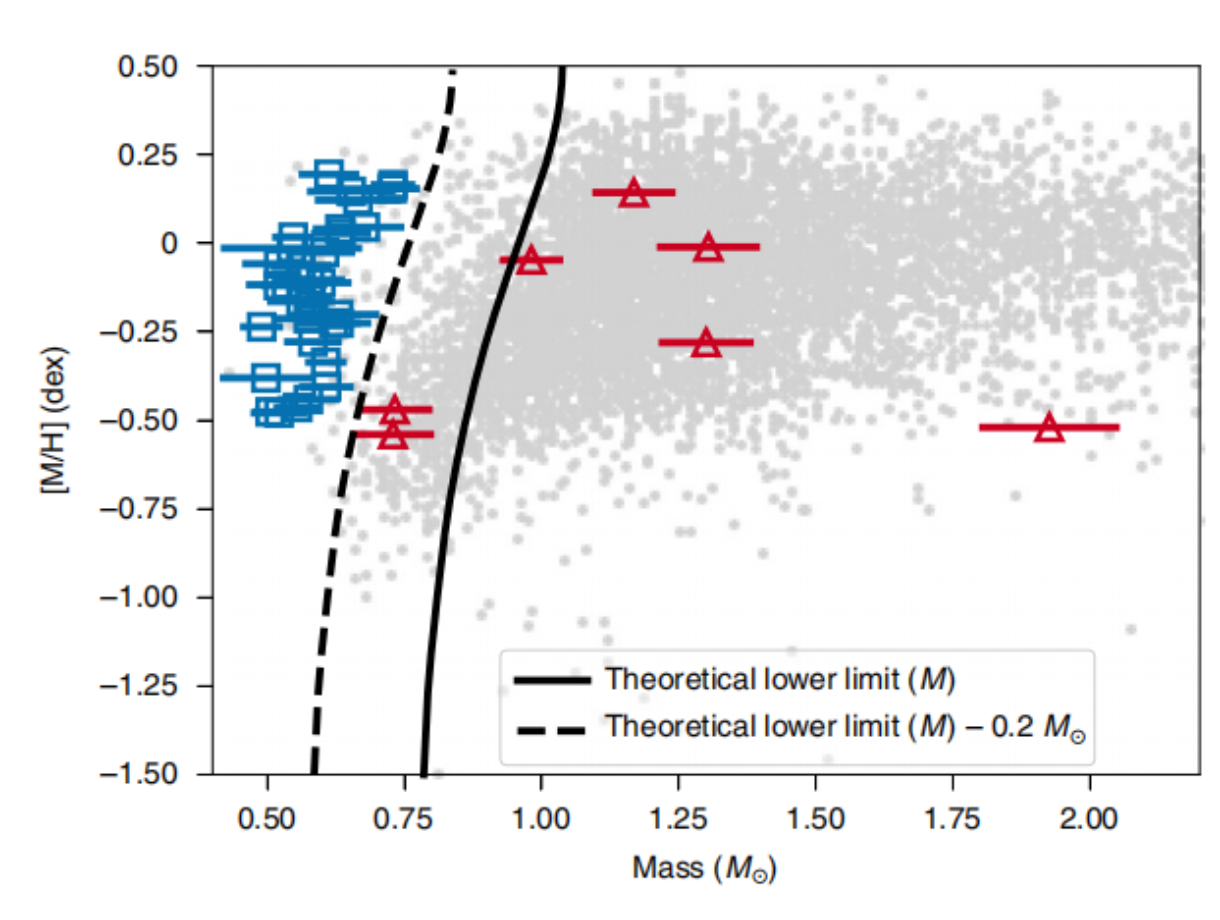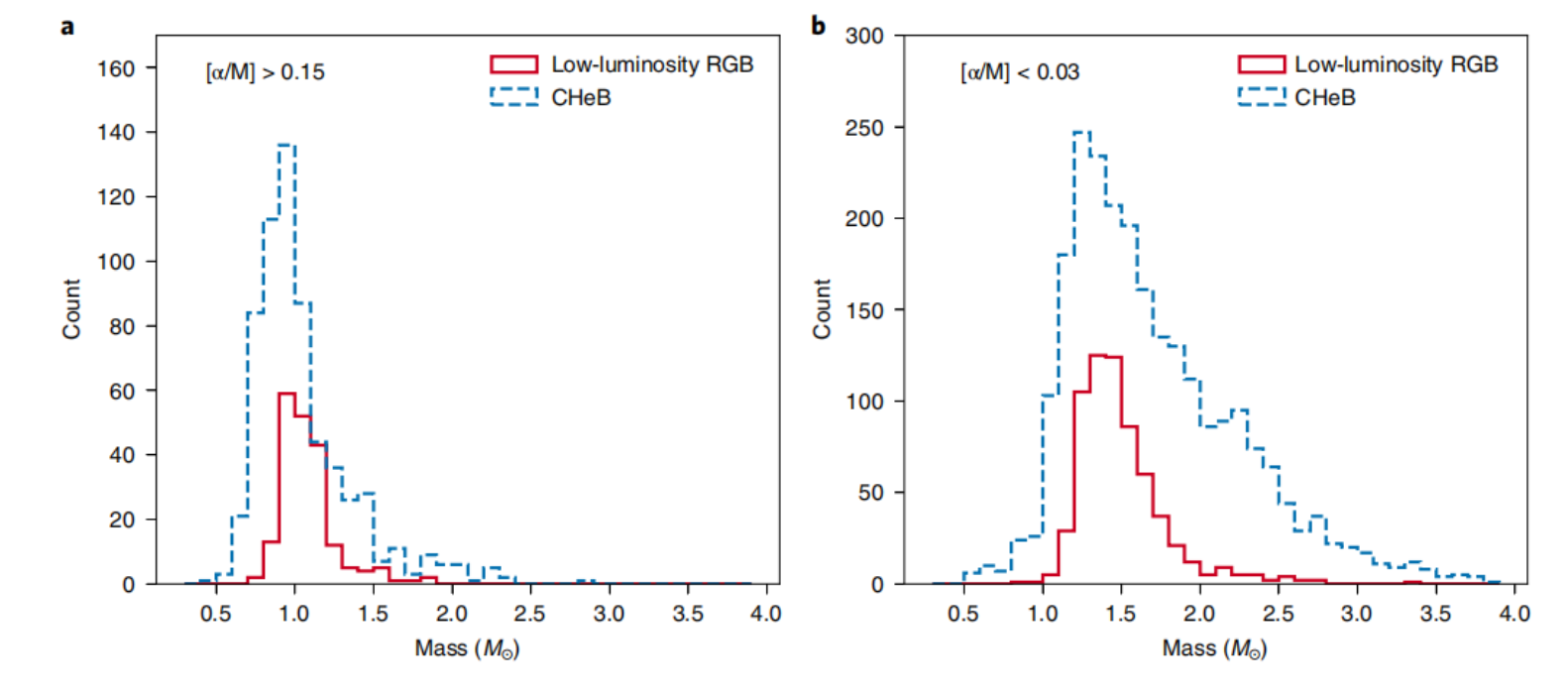BNU research team of Department of Astronomy discovered very low-mass red giants
BNU research team of Department of Astronomy and the research team of the University of Sydney recently published a cooperative article in the Journal of Nature Astronomy, and for the first time found the red cluster giant star that has experienced partial mass transfer. The participants in the study included Zhang Xianfei, associate professor of BNU Department of Astronomy (article collaborator), Professor Bi Shaolan (article collaborator), and Li Yaguang, PhD student of the University of Sydney (first author of the article, 2013 undergraduate of BNU Department of Astronomy).

(Fig. 1 | Fundamental parameters of CHeB stars in the Kepler red giant sample.)

(Fig. 2 | [M/H] versus mass for CHeB stars in the Kepler red giant sample.)

(Fig. 3 | Mass distributions of low-luminosity RGB and CHeB stars in the Kepler red giant sample (Methods).)
Among about 7,000 helium-burning red giants observed by NASA’s Kepler mission, the research uses asteroseismology to identify two classes of stars that must have undergone considerable mass loss, presumably due to stripping in binary interactions. The first class comprises about seven underluminous stars with smaller helium-burning cores than their single-star counterparts. Theoretical models show that these small cores imply the stars had much larger masses when ascending the red giant branch. The second class consists of 32 red giants with masses down to 0.5 M⊙, whose implied ages would exceed the age of the universe had no mass loss occurred. The numbers are consistent with binary statistics, and their results open up new possibilities to study the evolution of post-mass-transfer binary systems.
https://www.nature.com/articles/s41550-022-01648-5


